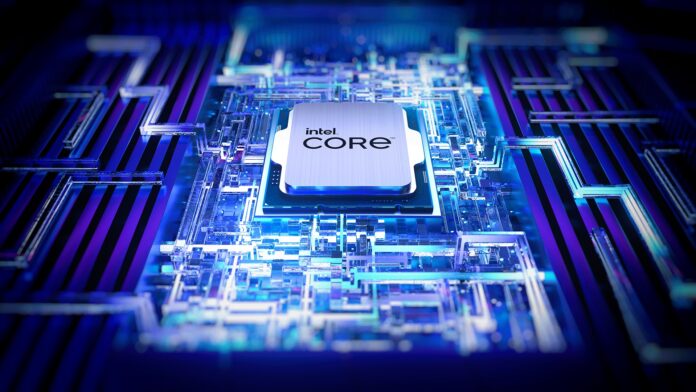The maximum number of cores for Intel13th generation flagship is 24, however in a strange turn of events, a 34-core CPU from the Raptor Lake family has been discovered.
That might make you assume that Intel is planning to surprise AMD (and the rest of us, for that matter) with some sort of super-powered chip, but this is not the case.
Let’s go back to the beginning of this story, which is set at Intel’s Innovation 2022 event, according to Tom’s Hardware(opens in new tab). Several wafers were on show from Team Blue, one of which turned out to include Raptor Lake silicon that had not yet been disclosed and larger dies than desktop models.
In addition to having 34 cores, as previously indicated, these CPUs also had eight DDR5 memory controllers and were mesh-connected, which is still another difference from ordinary Raptor Lake desktop chips,

Even Intel personnel were unsure of what this wafer was, and ideas circulated as to whether it was Raptor Lake or Ice Lake silicon. However, those employees eventually clarified that these were 13th-generation CPUs, as evidenced by the designation “Raptor Lake-S 34-Core” on the back of the die carrier.
Superfast Sapphire Rapids silicon rebranded: what does this mean?
What then is this mysterious CPU? It won’t fit in desktop PCs since it has a larger die size than the typical LGA 1700 socket found in motherboards for Z790 (Raptor Lake) and Z690 (Alder Lake).
Therefore, it appears that this chip is intended for workstation PCs and high usage, which is supported by the likelihood that all 34 of these cores are performance cores (yes, all of them). This is strongly implied by the usage of the mesh interconnect and the absence of any clusters of efficiency cores visible on the die; presumably, no desktop CPU would be constructed in that manner. You probably already know that Intel’s recently unveiled Raptor Lake-S desktop CPUs only feature 8 performance cores (the 13900K flagship teams those up with 16 more modest efficiency cores, to make for 24-cores in total as we mentioned at the outset).
We have to concur that Tom’s Hardware’s conclusion that this is most likely a Sapphire Rapids MCC die stamped with Raptor Lake branding and targeted for the workstation market is the only plausible one. If accurate, this CPU will undoubtedly be a truly blazing piece of silicon given that it has 34 full-on performance cores.
However, it must be acknowledged that it is remarkable that Intel would display an unreleased chip wafer by accident at its major event. Of all, mistakes and leaks do occur frequently in the computer industry.
As a last point, we do know that Intel is working on a flagship refresh that will probably be dubbed the 13900KS, which will be another powerful Raptor Lake processor. The core configuration of this CPU will remain the same as that of the 13900K, though. It will accelerate to 6GHz right out of the box, which is an impressive feat, and is probably Team Blue’s proactive response to AMD’s 3D V-cache Ryzen 7000 models.


